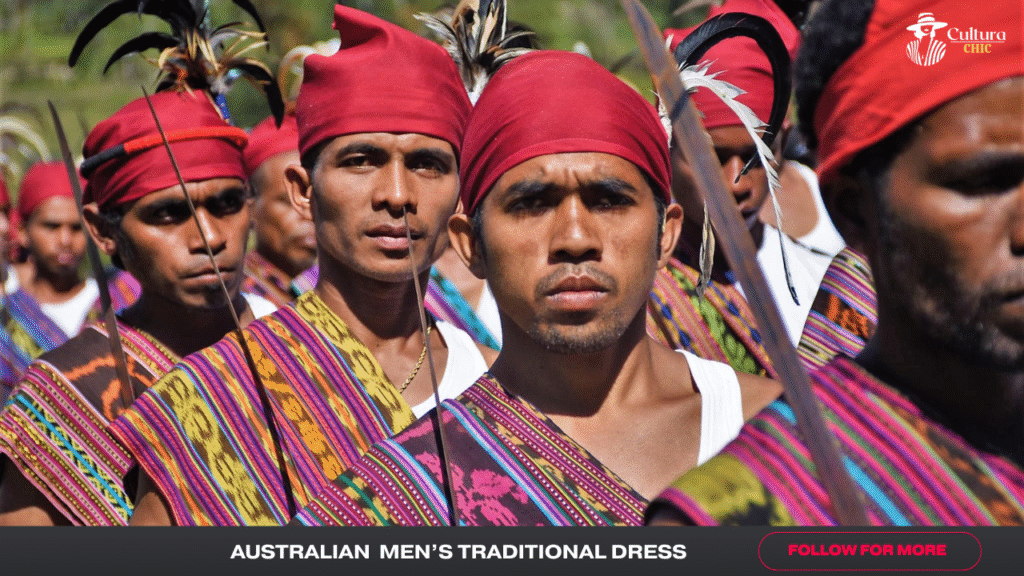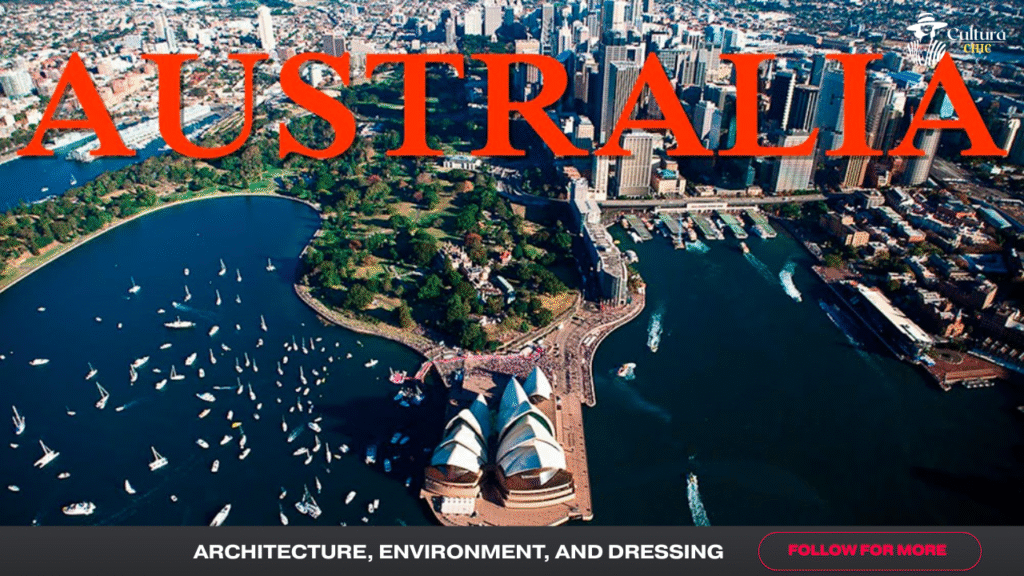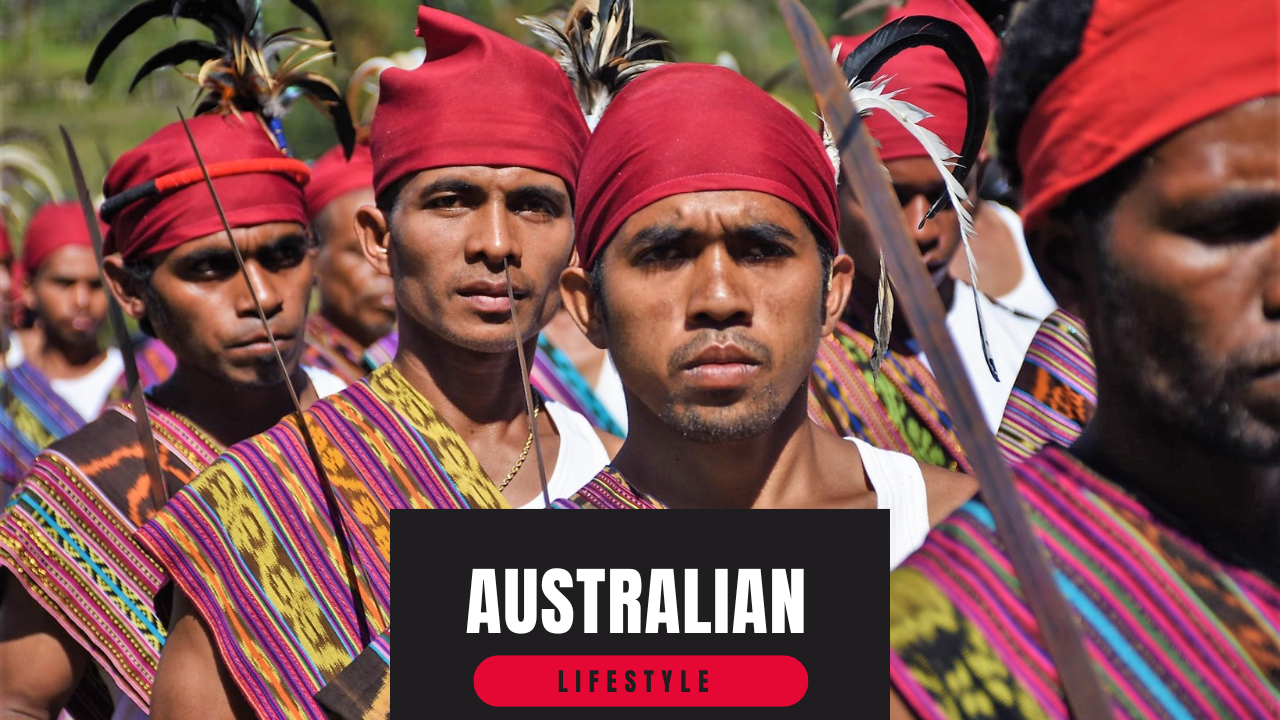Australia’s fashion story is one of deep identity, climate, and history. From the time of the British settlers to today’s diverse influences, traditional Australian culture and clothing have reflected a mix of worlds. Each fabric, hat, and jacket tells a story about land, people, and change.
Especially for a U.S. audience, understanding this blend reveals more than just outfits. It opens a window into national character. The evolution of Australian clothing reflects a lifestyle born from extremes—heat, dust, sea, and history.
Historical Roots and Ethnic Relations in Australia

When convicts and officials first arrived with the British settlers in 1788, they brought strict dress codes from Europe. But these styles clashed with the lifestyle and values of the Indigenous Australian attire. Indigenous peoples wore kangaroo skin cloaks, decorated their bodies with ceremonial adornment, and followed customary practices that focused on nature and connection rather than status. These ancient traditions continue to influence Australian clothing today, especially through symbolic patterns and textures.
As immigration grew, especially from China, Greece, and the Middle East, the mix of cultures changed what people wore. Each group brought its own colors, textiles, and meanings. Over time, cultural acculturation through dress created something new—distinctly Australian but with global roots. That fusion is still seen in modern Australian clothing brands that celebrate ethnic diversity through fabric and design.
Traditional Australian Clothing Through History

Australia’s early style was shaped by hard land and hard work. In the goldfields fashion influence era, outfits were built to survive heat, dust, and labor. Colonial clothing in Australia was simple and practical, often reused and handmade. The Dryzabone coat became iconic for protection against wind and rain. These garments were more than clothing—they were a way of life, and today they inspire many Australian clothing collections.
Later, after both world wars, clothing became more expressive. During the post-WWII fashion boom, Australia started producing its own textiles. The Australian textile industry grew with support from groups like the Australian Wool Corporation. Local designers began to gain recognition. Paris wasn’t the only place influencing style anymore—the Parisian fashion influence remained, but now mixed with local tastes. This was the dawn of signature Australian clothing identity.
Colonial & Gold Rush Periods
In the 1800s, both settlers and gold diggers wore strong clothing for rough conditions. Men favored wide Akubra hats, sturdy boots, and canvas trousers. The women’s style borrowed from Britain but adjusted for heat. Long skirts were worn with light cottons. The goldfields clothing style reflected resilience, not wealth. Early Australian clothing was handmade from coarse materials, built for durability.
These pieces didn’t just cover the body—they told a story. For example, the cabbage tree hat, woven from palm leaves, was both sun protection and a symbol of working-class grit. This fashion helped shape the egalitarian clothing identity still seen in rural areas today and remains a symbol in vintage Australian clothing revivals.
War and Post-War Fashion
During both world wars, clothing was plain and rationed. Soldiers’ uniforms shaped men’s styles, while women adopted simpler cuts. After the war, a new age of design began. The Powerhouse Museum in Sydney began collecting rare outfits. Australian brands like RM Williams clothing rose in popularity. These post-war changes paved the way for today’s innovative Australian clothing labels.
In the 1950s and 1960s, the world noticed Australian fashion. This was helped by the Mercedes Australian Fashion Week and later the Melbourne Fashion Festival. Designers like Collette Dinnigan, Akira Isogawa, and Peter Morrissey gained fame. They told Australia’s story through pattern, texture, and shape—solidifying the reach of Australian clothing.
Impact of Indigenous Designs
While Western wear took hold, Indigenous textile design kept its place. Artists used dot painting and dreamtime symbols on fabrics. Groups supported T-shirt design by Indigenous artists, especially in the 1980s. Designers like Jacinta Numina Waugh led the way in blending tradition with trend, leaving a deep imprint on modern Australian clothing lines.
Some designers used Indigenous elements in their fashion without permission. This sparked debates about respect and ownership. But others, such as cross-cultural fashion collaborations with Jenny Kee and Linda Jackson, showed how to share respectfully. The result is richer fashion that honors many voices within the wider Australian clothing movement.
Australian National Costume for Men and Women
While there’s no single official national costume, certain looks say “Australia” the moment you see them. For men, the image is clear: an Akubra hat, Dryzabone coat, checkered shirt, and tough boots. This rugged style still defines rural and outback identity and remains key to Australian clothing branding.
For women, it’s more varied. From flowing skirts in farming towns to Swimwear industry in Australia on beaches, the dress shows a love of comfort and nature. Designers have mixed classic cuts with local colors. Today, the blend of old and new creates pride across generations, forming a strong part of women’s Australian clothing identity.
Women’s Traditional Dress

Women in early Australia wore dresses inspired by Europe. Yet they adapted for sun and soil. Over time, cotton frocks gave way to Australian leisurewear, ideal for outdoor life. On the beach, Nicole Zimmermann swimwear and Paula Stafford helped pioneer the bold, body-friendly look. These women changed the perception of what Australian clothing could be.
These styles weren’t only for beauty. They represented freedom. Women, especially in the 1960s and 70s, dressed as a sign of social change. By the time the Flamingo Park boutique opened in Sydney, led by Jenny Kee and Linda Jackson, women’s wear became art itself. Their influence shaped a new kind of expressive Australian clothing.
Men’s Traditional Outfits

Australian men often wore what was needed for survival. Wide hats, rolled sleeves, and leather boots defined bush wear. This became an image of Australian strength. Companies like RM Williams clothing turned this into a global brand. Many modern Australian clothing labels still draw on this tough, practical masculinity.
Even in the city, echoes of the outback stayed. Today, from weddings to rodeos, this look remains part of male identity. It’s more than fashion. It’s about respect for land, work, and history—all themes stitched into classic Australian clothing.
Regional Variations in Australian Attire
Clothing styles change across Australia. In the humid north, people wear light, airy clothing. Down south, where it’s cooler, layering is common. Cities like Sydney and Melbourne also show clear style differences, adding more diversity to Australian clothing.
Sydney vs. Melbourne fashion styles is a real debate. Sydney often goes for beachy, American looks. Melbourne prefers European, black-toned classics. These patterns show how deeply the impact of climate on clothing and culture runs through Australian clothing traditions.
Social Structure and Cultural Norms
Australia claims to be class-free, but clothing tells another story. The idea of equality runs deep in the egalitarian clothing identity, yet events like the Melbourne Cup show high fashion at play. The split between city fashion and bushwear also defines many layers in Australian clothing.
You’ll see this most in “larrikin” style—clothing that’s cheeky, bold, and non-conforming. Larrikin fashion culture is about not fitting in. It combines old-school masculinity with wild color, especially in youth scenes or at local footy matches. This rogue approach keeps Australian clothing fresh and unpredictable.
Architecture, Environment, and Dressing Norms

Homes in Australia are built for weather—so are clothes. Sunlight, bushfires, and floods demand smart materials. That’s why many fabrics are UV-resistant or breathable. The clothing manufacturing in Australia industry had to evolve fast to survive and define today’s Australian clothing.
In the bush, utility wins. But city people often follow minimalist fashion trends in Australia, choosing clean, simple cuts over heavy styling. These patterns prove that dressing isn’t just about looks—it’s survival and comfort, too. It’s another layer in the purpose-driven nature of Australian clothing.
Food, Lifestyle, and Their Impact on Dress
Barbecue culture, long weekends, and coastal living shape how Australians dress. At the beach, Speedo swimwear, Billabong and Quiksilver, and Mambo surfwear dominate. These are more than brands—they represent lifestyle, and they’ve become global ambassadors of Australian clothing.
Clothes are loose, fun, and sun-friendly. Even the rise of yoga and gym life brought in athleisure. This comfort-first mindset changed fashion not just at home but globally. These youth surfwear brands now shape global trends through the success of relaxed Australian clothing aesthetics.
Gender Roles, Family, and Marriage Traditions
Weddings and family events mix old and new. Brides may wear white, but their dresses often include Australian motifs in fashion, like native flowers or earthy tones. Grooms might wear suits with bush-style hats or boots—a nod to outback pride seen in Australian clothing choices.
Gender roles have also shifted. Where once men and women had strict clothing lines, now there’s room for creativity. Some Indigenous communities celebrate more than two genders. Their dress reflects political resistance through clothing and pride. It expands the meaning and reach of modern Australian clothing.
Conclusion
Traditional Australian culture and clothing tell the story of survival, pride, and identity. From the colonial clothing in Australia to bold beachwear, every piece has meaning. Designers from Sass and Bide to Easton Pearson prove that Australian clothing is creative, modern, and rooted in history.
With strong links to land, lifestyle, and heritage, this nation’s style continues to evolve. And as it does, it invites the world—including the U.S.—to see fashion not just as fabric, but as voice, identity, and spirit. That’s what makes Australian clothing truly unforgettable.
FAQS
Q: What is Australia’s traditional clothing?
Australia’s traditional clothing blends Indigenous Australian attire like kangaroo-skin cloaks with Colonial-era pieces like the Akubra hat and Dryzabone coat, forming the core of authentic Australian clothing.
Q: What type of clothes does Australia wear?
Australians typically wear relaxed, climate-friendly fashion. From surfwear to Australian outback clothing, everyday wear focuses on comfort, durability, and regional style.
Q: What to wear in Australia as a female?
Light fabrics, breezy dresses, and sun-safe fashion define women’s Australian clothing choices. Popular styles include Nicole Zimmermann swimwear and modern Indigenous fashion.
Q: What are the traditional clothes called?
Traditional Australian clothes include the kangaroo-skin cloak, Akubra hat, and Driza-Bone coat, which symbolize the rural and cultural roots of Australian clothing.
Welcome to Cultura Chic! I’m CHAUDHARY ALI, an AI-Powered SEO, and Content Writer with 2 years of experience.

